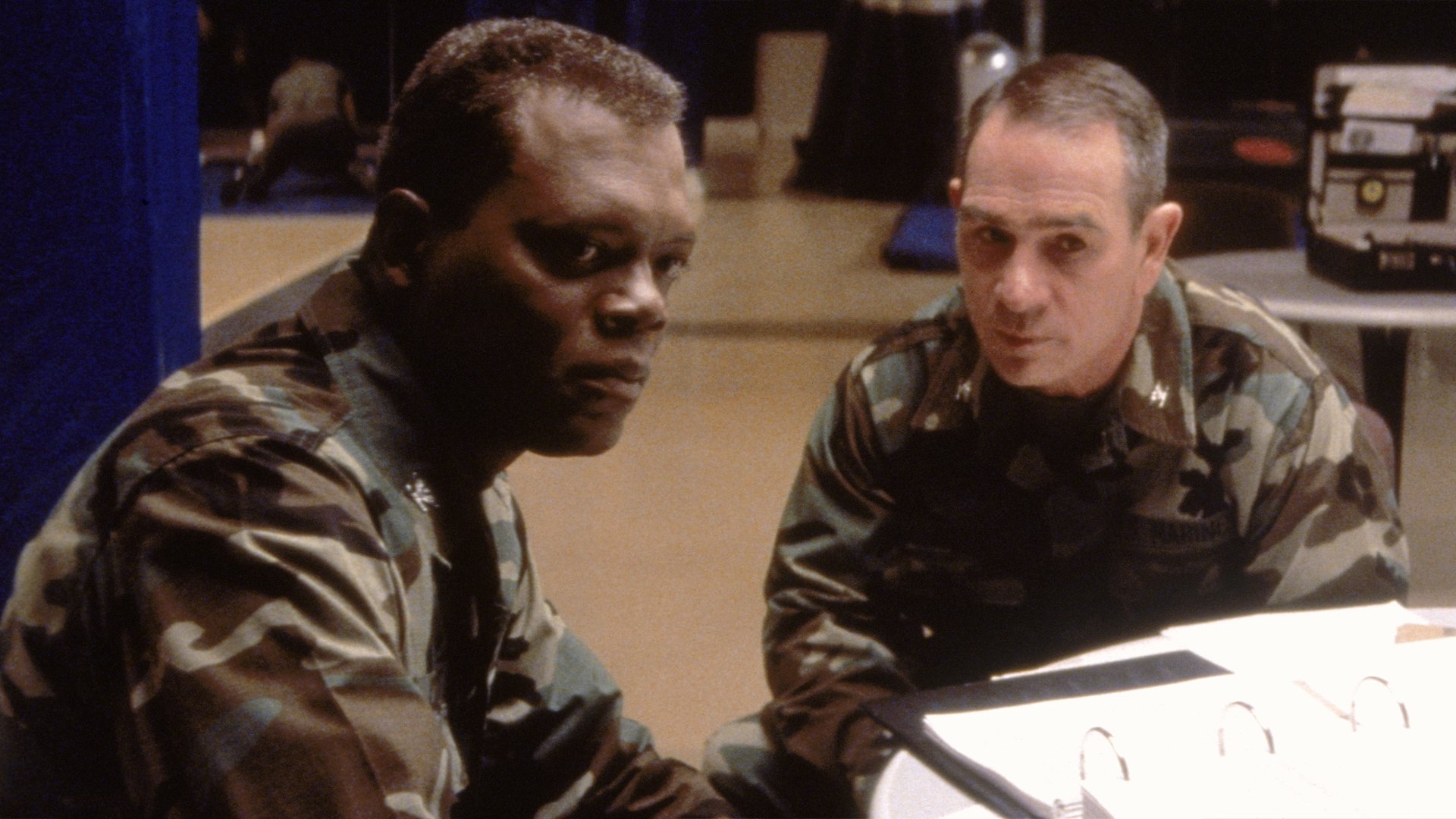From the three-act structure to the "show, don't tell" mantra, movie rules have shaped the way stories are told on the big screen. These guidelines have evolved over decades, influenced by pioneers like Alfred Hitchcock, Steven Spielberg, and Quentin Tarantino, who have all contributed to the cinematic language we know today. While the rules may seem technical, they are deeply rooted in human psychology and the universal desire for connection, conflict, and resolution. By adhering to—or sometimes breaking—these principles, filmmakers can create experiences that resonate with audiences on a profound level. In this article, we will explore the fascinating world of movie rules, diving into their origins, applications, and the ways they impact storytelling. We'll answer critical questions like "What Are the Key Movie Rules Every Filmmaker Should Know?" and "How Do Movie Rules Influence Audience Engagement?" Along the way, we'll uncover practical insights, expert tips, and real-world examples that demonstrate the power of these principles. Whether you're looking to make your own film or simply want to deepen your understanding of cinema, this guide will provide you with the tools and knowledge you need to appreciate the magic of the movies.
Table of Contents
- Biography of Influential Filmmakers
- What Are the Key Movie Rules Every Filmmaker Should Know?
- How Do Movie Rules Influence Audience Engagement?
- Why Should You Follow the Three-Act Structure in Movie Rules?
- Can Movie Rules Be Broken Successfully?
- The Role of Visual Storytelling in Movie Rules
- How Important Is Dialogue in Movie Rules?
- Frequently Asked Questions About Movie Rules
Biography of Influential Filmmakers
To truly understand movie rules, it's essential to explore the lives of the visionaries who have shaped them. Below is a table summarizing the personal details and achievements of three iconic filmmakers:
| Name | Date of Birth | Notable Works | Contribution to Movie Rules |
|---|---|---|---|
| Alfred Hitchcock | August 13, 1899 | Psycho, Rear Window, Vertigo | Pioneered suspense techniques and the "MacGuffin" concept. |
| Steven Spielberg | December 18, 1946 | Jaws, E.T., Schindler's List | Mastered emotional storytelling and visual spectacle. |
| Quentin Tarantino | March 27, 1963 | Pulp Fiction, Django Unchained, Kill Bill | Revolutionized nonlinear storytelling and dialogue-driven scenes. |
What Are the Key Movie Rules Every Filmmaker Should Know?
Movie rules serve as foundational principles that guide filmmakers in creating compelling narratives. Here are some of the most critical rules:
Read also:Discover The Enchanting World Of Disney Princess Names A Journey Into Magic
- The Three-Act Structure: This classic framework divides a story into setup, confrontation, and resolution, ensuring a coherent and satisfying narrative arc.
- Show, Don't Tell: Visual storytelling is paramount in cinema. Instead of relying on dialogue, filmmakers should use visuals to convey emotions and plot points.
- The Rule of Three: Whether it's characters, plot twists, or visual motifs, the number three is often used to create balance and rhythm in storytelling.
These rules are not restrictive but rather serve as a foundation for creativity. By understanding them, filmmakers can make informed decisions about when to adhere to or deviate from these principles.
Why Are These Rules Universally Accepted?
The universality of movie rules lies in their alignment with human psychology. For instance, the three-act structure mirrors the way we experience life—beginnings, challenges, and resolutions. Similarly, the "show, don't tell" rule taps into our innate ability to interpret visual cues, making stories more immersive and engaging.
How Do Movie Rules Influence Audience Engagement?
Movie rules play a crucial role in shaping how audiences connect with a film. When executed well, these principles can evoke emotions, build tension, and create memorable moments. For example, the use of the "180-degree rule" in cinematography ensures spatial continuity, allowing viewers to stay immersed in the story without confusion.
Moreover, the pacing dictated by movie rules helps maintain audience interest. A well-timed plot twist or a carefully placed emotional beat can leave a lasting impact, ensuring that viewers remain invested from start to finish. These elements are especially important in genres like thriller and drama, where engagement is key to the film's success.
What Happens When Movie Rules Are Ignored?
While breaking movie rules can sometimes lead to innovation, ignoring them entirely can alienate audiences. For instance, a lack of narrative structure can make a film feel disjointed, while excessive exposition can detract from the visual experience. Understanding the balance between adherence and deviation is essential for effective storytelling.
Why Should You Follow the Three-Act Structure in Movie Rules?
The three-act structure is one of the most enduring principles in filmmaking. It provides a clear roadmap for storytelling, ensuring that every scene serves a purpose in advancing the plot or developing characters. Here's a breakdown of each act:
Read also:911 Lone Star Cast A Comprehensive Guide To The Stars Of The Hit Tv Series
- Act 1 (Setup): Introduces the characters, setting, and central conflict. This act hooks the audience and sets the stage for the story.
- Act 2 (Confrontation): The protagonist faces challenges and obstacles, leading to a climactic moment of tension or revelation.
- Act 3 (Resolution): The conflict is resolved, and loose ends are tied up, providing closure for the audience.
By following this structure, filmmakers can create a narrative that feels both familiar and satisfying, while still allowing room for creativity and innovation.
Can Movie Rules Be Broken Successfully?
While movie rules provide a solid foundation, some of the most iconic films have succeeded by breaking them. For example, Quentin Tarantino's nonlinear storytelling in "Pulp Fiction" defies traditional narrative conventions, yet the film remains a masterpiece. Similarly, the use of long, uninterrupted takes in "Birdman" challenges conventional editing practices, creating a unique cinematic experience.
However, breaking movie rules requires a deep understanding of why they exist in the first place. Successful deviations often enhance the story rather than detract from it, proving that rules are meant to be bent, not broken indiscriminately.
What Are the Risks of Breaking Movie Rules?
Breaking movie rules without a clear purpose can lead to confusion and disengagement. For instance, a film that lacks a coherent structure may leave audiences feeling lost, while excessive visual experimentation can distract from the story. Filmmakers must weigh the potential benefits against the risks before deviating from established principles.
The Role of Visual Storytelling in Movie Rules
Visual storytelling is at the heart of movie rules, as cinema is primarily a visual medium. Techniques like lighting, camera angles, and color grading are used to convey emotions and themes without relying on dialogue. For example, low-key lighting is often used in horror films to create a sense of dread, while warm tones can evoke feelings of nostalgia or comfort.
By mastering visual storytelling, filmmakers can create a richer, more immersive experience that resonates with audiences on a subconscious level.
How Important Is Dialogue in Movie Rules?
Dialogue is a powerful tool in filmmaking, but its importance varies depending on the genre and style of the film. In character-driven dramas, dialogue can reveal motivations and relationships, while in action films, it often takes a backseat to visual storytelling. The key is to strike a balance between dialogue and other storytelling elements to ensure a cohesive narrative.
Additionally, memorable lines can elevate a film's impact, becoming part of popular culture. Think of iconic quotes like "Here's looking at you, kid" from "Casablanca" or "I'm the king of the world!" from "Titanic." These moments are crafted with precision, adhering to the principles of effective dialogue.
Frequently Asked Questions About Movie Rules
What Are Some Common Movie Rules for Beginners?
Beginners should focus on mastering the basics, such as the three-act structure, the "show, don't tell" principle, and the importance of pacing. These foundational rules provide a solid framework for storytelling.
How Can I Learn More About Movie Rules?
There are numerous resources available, including books like "Save the Cat!" by Blake Snyder and online courses on platforms like MasterClass. Additionally, studying classic films and analyzing their techniques can provide valuable insights.
Are Movie Rules the Same Across All Genres?
While the core principles remain consistent, certain genres may emphasize specific rules. For example, horror films often rely on suspense and tension, while comedies focus on timing and delivery.
Conclusion
Movie rules are the invisible threads that weave together the fabric of cinematic storytelling. By understanding and applying these principles, filmmakers can create films that captivate audiences and stand the test of time. Whether you're a seasoned professional or an aspiring creator, mastering these rules will enhance your ability to craft meaningful and impactful stories.
External Resource: For further reading, check out Filmmaking.com, a comprehensive guide to all things cinema.

